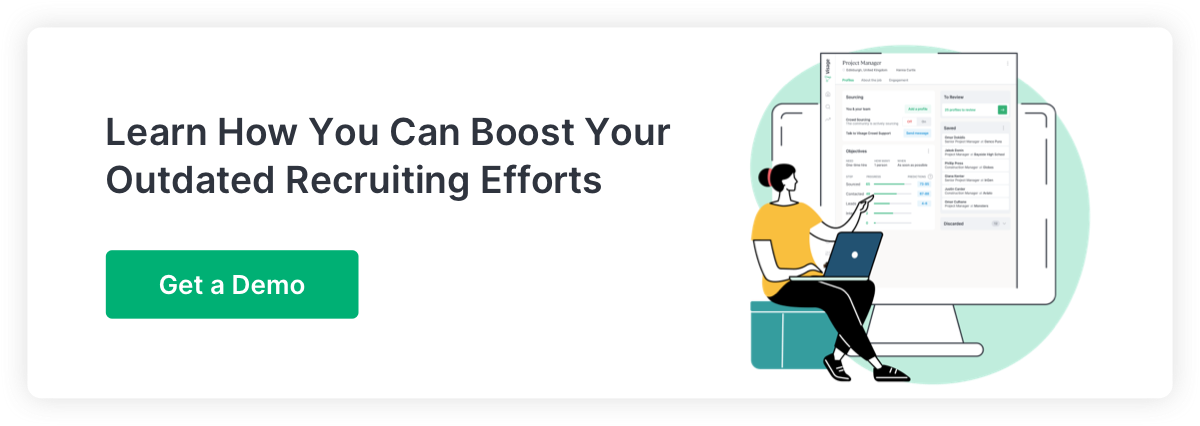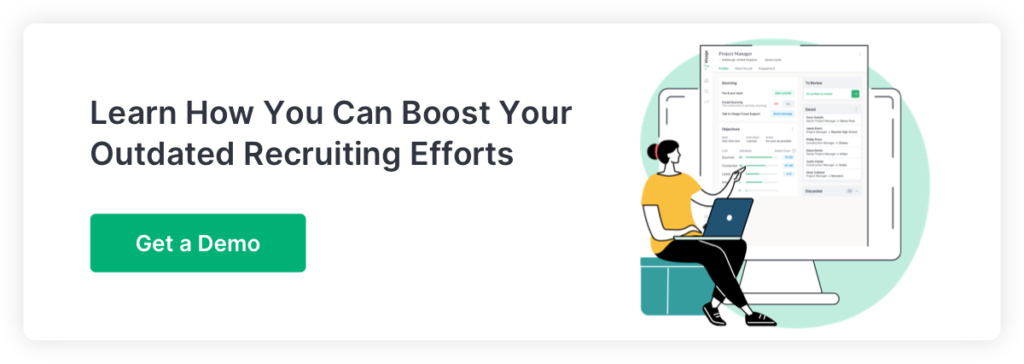If you’re not sure exactly what ChatGPT and how it works, you can learn more first in “What is ChatGPT and How Do I Use it? The Recruiter’s Guide To ChatGPT Part 1.”
While ChatGPT comes pre-trained on a large collection of general internet text, fine-tuning the model with your company’s specific data, such as recruitment-related conversations and unique information, is essential.
By training ChatGPT before using it in recruitment, you’ll achieve optimal performance and personalization in the hiring process later each time you use it.
How to Train ChatGPT for Recruitment
Here are 10 steps for preparing ChatGPT to understand and respond appropriately to queries and interactions related to your company’s hiring and recruitment process:
1. Collect Your Data: Gather relevant data from your company’s recruitment history. This can include past interactions with candidates from emails, chat logs, social media, or other communication channels, as well as frequently asked questions from candidates and information about various job openings.
2. Clean the Data : Clean and preprocess the collected data to remove any sensitive or personally identifiable information (PII) that should not be used in training the model. Also, organize the data into structured inputs and corresponding responses.
3. Fine-Tune Your Language: ChatGPT is pre-trained on text data, but fine-tuning is necessary to adapt the model to your needs. You need to train it on your collected and cleaned recruitment data to learn the specific language and patterns used in recruitment interactions.
Help it understand your unique job titles, qualifications, interview processes, candidate questions, and more.
4. Define Contextual Prompts: Create prompts or input templates that provide context to ChatGT during interactions. For example, the prompt might include information like a candidate’s name, the job role you’re recruiting for, the recruitment stage they are in, etc. These prompts help the model understand the context and generate more relevant responses.
5. Choose Training Objectives: Define the objectives of the training process. You might aim to optimize the model to provide accurate answers to common candidate questions, schedule interviews effectively, match candidates to job openings, and provide timely updates on the application status.
6. Validate and Test: After fine-tuning the model, validate its performance on a separate dataset (a separate chat) to ensure it is contextually aware and produces coherent and accurate responses. Continuously test the model’s responses during deployment to monitor its performance.
7. Continue to Improve: Regularly update the data and include new interactions, questions, and job openings to keep the model up-to-date and relevant. Fine-tuning is an iterative process, and continuous improvement ensures the AI remains effective and current over time.
Once you’ve learned how to train ChatGPT for recruitment, you can become super personalized and keep streamlining your strategy. We will explore ways to use your trained ChatGPT as we continue our “Recruiter’s Guide To ChatGPT”

Director of Sourcing Operations at Visage, Evelyn has experience in agency, RPO, and in-house roles spanning 12 years in the recruitment industry. Evelyn has built and oversees a 4000-member global freelance sourcing community. Every Christmas in Ireland, she enjoys putting up her THREE Christmas trees.

